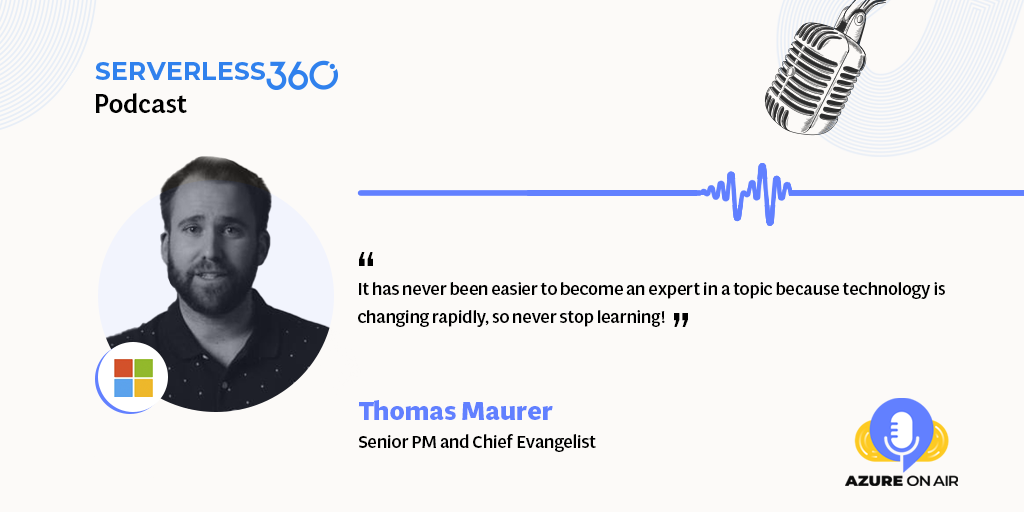The Azure Hybrid tour
Key Takeaways
Thomas is a Senior Program Manager & Chief Evangelist for Azure Hybrid at Microsoft. As part of the Azure engineering team (Cloud + AI), he engages with the community and customers worldwide to share his knowledge and collect feedback to improve the Azure hybrid cloud and edge platform. Thomas helps the communities and organizations adopt the Azure Edge + platform (hybrid) and provides an engineering-focused effort to improve the customer hybrid and multi-cloud experience.
Thomas’s take on increasing investment in hybrid and multi-cloud
When people think about cloud trends, they think about machine learning, AI, and many other things. But what we see in the enterprise market is hybrid and multi-cloud. It means the customers run workloads on-premises in their own data centers or locations. For example, factories, or retail stores, run not just in one cloud provider but run their workloads at other cloud providers too. At Microsoft, we acknowledge very strongly that there are many reasons why customers want to avoid running these workloads in one cloud provider. That is where hybrid and multi-cloud come in.
Services offered by Microsoft for on-premise to the cloud transition
In the current trends, 95% of companies are in a hybrid or multi-cloud state. Microsoft offers customers different kinds of solutions depending on their needs. Azure had products like Windows Server with Active Directory, where users could use Azure Active Directory in a hybrid mode, or it has an SQL server where they can use the SQL in hybrid mode. Recently, Microsoft had two extensive investment areas, one of which Microsoft announced in 2015, the Azure stack solution. Over the years, it became a portfolio or a family of products and services, allowing customers to take cloud-inspired hardware and run it as infrastructure in their locations. So when you need some consistent infrastructure with your cloud provider, that is what our Azure Stack family can offer. Microsoft also has different solutions, such as Azure Stack Edge, which is excellent for machine learning workloads and AI. The Azure Stack hub version is exciting when dealing with a disconnected environment.
Need for management and integration.
Much effort is required to move an application to Azure. Depending on how the application is built, you would have some redirection. Based on the application, management, and integration are required for one and multiple cloud providers. Some companies decide that multi-cloud is a strategy for them, even though it’s tough. Adding multiple cloud providers to the mix will complicate things, and you will need more people. In a multi-cloud environment, the user should decide that they are going to use a primary cloud provider. 78% of Fortune 500 companies now use Microsoft as a hybrid cloud offering.
Advice to Listeners: Never Stop Learning
“If I need to give one tip to the listeners, then it will be, really, never stop learning. Something unique in the tech community is that you can get confronted by so many new things daily. We can always learn new things, and I think we should enjoy that. If you are working with Azure or Cloud, so many changes are happening, and so many things are going on. Don’t be afraid of all these changes; don’t think you need to know everything at any time. Take your time to learn the things you are interested in. Whenever something new is coming up that you’re interested in, go ahead, and do that. I think it has never been easier to become an expert in a topic because things are changing so fast”, says Thomas.


